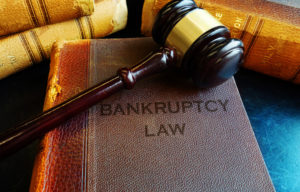A recent survey concluded that over 30 percent of Americans have trouble meeting their financial obligations. Whether you’re mired in student loan or credit card debt, have a mortgage or car loan, or perhaps don’t even have that much debt but still struggle to stay current due to the ever increasing cost of living, perhaps you’ve come to the conclusion that bankruptcy is the option for you. Before you take the first step, it’s important to know what you’re getting into with this extremely serious decision.
The U.S. Congress had passed numerous bankruptcy bills since 1800, but the law was always repealed after a few years due to corruption and favoritism toward creditors or debtors. It wasn’t until 1898 that a lasting if not flawed bankruptcy bill was finally agreed upon. The Bankruptcy Act was reformed heavily in 1978 and again in 2005, but still remains intact and functioning.
What is Bankruptcy Exactly?
Bankruptcy is a legal process where you tell a judge that you’re unable to pay your debts. The judge then analyzes your assets and debts with a court trustee to determine whether to liquidate those debts. If they find that you have no reliable means to pay what you owe, you can declare bankruptcy. This declaration will cancel all or most of your debts but doesn’t help with things like student loans, back taxes, and luxury items bought immediately before filing.
Chapter 13, Chapter 7:
When you declare bankruptcy as a consumer, you’ll file for Chapter 7 or Chapter 13. Chapter 7, which stays on your credit report for 10 years, amounts to the court seizing all your assets so you can pay back as much debt as possible, after which the remaining unpaid balance is erased. This process could result in losing your home and your car at the judge’s discretion. Courts usually only allow Chapter 7 bankruptcy if they determine your income is too low to pay back your debts.
Chapter 13 is when the court supports a plan for you to pay back some of your debt over a 3 to 5 year period. Under this provision, you can keep your stuff and given time to bring your car payments and mortgage up to date. The court also organizes a strict budget for the consumer that’s monitored by the court throughout the repayment period. Chapter 13 stays on your credit report for 7 years.
If you feel you have exhausted every other option and decide it’s in your best interest to pull the trigger on bankruptcy, it’s important to remember how much it will affect your life in the years to come. With bankruptcy on your credit report, potential employers, businesses, landlords, and basically anyone can see that you’ve declared because of its public domain. If you plan on buying a home, you’ll have to wait sometimes up to 4 years before you qualify for a loan again.
Bankruptcy will erase your debt, and depending on how underwater you are, that may be the best outcome for you overall. It is a way to start anew on a more sustainable financial path and provided you’re willing to be more fiscally responsible, it can drastically increase your standard of living in the long run.
Conclusion:
Bankruptcy is serious, and any professional would recommend financial coaching, fixing your budget, taking on a second job, or whatever it takes to avoid filing. Sometimes the circumstances call for drastic solutions. If you have come to the decision you’re going to declare bankruptcy, make a list of every debt you’ve incurred and talk to a reputable lawyer. Better yet, come by the offices of Family Law Richard E. Young & Associates. We will gladly walk you through the process and manage your expectations along the way.


Leave a Reply